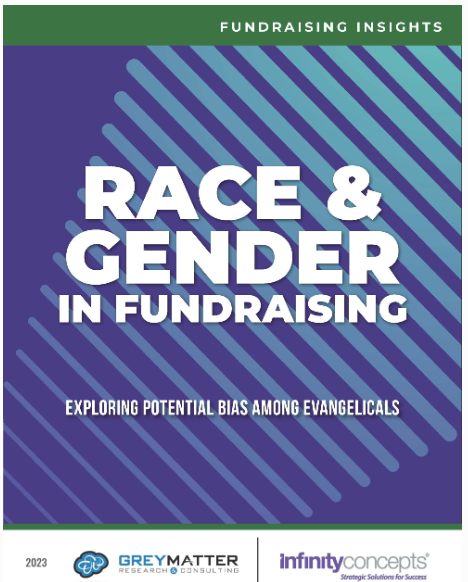Are Evangelicals Biased?
What impact does race and gender in fundraising have? Does it matter whether a donor-supported organization shows a picture of a boy or a girl in their appeal? Do donors favor helping children of their own racial or ethnic background? Does the impact of an image depend on the race or gender of the child in the image?
This is obviously a delicate issue. We can’t just ask people, “Would you rather help a child of your own race? Of your own gender? Do you prefer to help girls rather than boys, or black kids rather than Asian kids?”
Rather than ask them directly, we took a different approach. In our ongoing research among evangelical Protestants, Grey Matter Research and Infinity Concepts, tested the fundraising impact of different images without respondents even knowing what we were looking to learn. In doing so, we explored whether evangelicals have biases by race, ethnicity, or gender when it comes to the images they see in fundraising appeals.
The result is the new report Race & Gender in Fundraising: Exploring Potential Bias among Evangelicals. (For a free copy of Race & Gender in Fundraising, simply e-mail ron@greymatterresearch.com.)
Colorblind
In advertising circles, it is commonly believed people want to see others like themselves using a product or service. African-Americans want to see other African-Americans buying car insurance; older adults want to see other older adults drinking coffee, and so on.
While that may be true for consumer purchases, at least among evangelicals, it does not appear to hold true for fundraising. We showed evangelicals a simple advertisement about domestic hunger. Every person saw the same ad, but with one of four different children pictured: Asian, Latino, black, or white.
What we learned, contrary to common assumptions, is that evangelicals do not find a child of their own racial or ethnic background any more or less compelling than a child of any other background. For example, white evangelicals are just as likely or unlikely to find an ad compelling regardless of whether they see a white child or another child pictured.
Not Gender-blind
While evangelicals lack racial/ethnic bias in their reactions to these fundraising images, gender bias exists. Men prove to be a bit more likely to favor helping a boy over a girl in the ads they see. Women prove to be significantly more likely to favor helping a boy.
Women are more likely to say the ads featuring a boy rather than a girl get their attention and are touching, urgent, the kind of person they want to help, and compelling in encouraging them to click on the ad for more information.
The Impact
Because there hasn’t been a lot of research like this among evangelicals (or among anyone, for that matter), a lot of assumptions are used in selecting imagery for appeals. Have you heard, or maybe even put forth, any of the following?
- “People want to see kids who look like them in our ads.”
- “We have a heavily female audience, so we need lots of pictures of little girls.”
- “Donors expect to see pictures of kids from poor parts of the world, like areas of Africa and Central America, so we shouldn’t show white kids.”
At least when communicating with evangelicals, some of the assumptions donor-supported organizations have about imagery don’t appear to hold water.
Does this mean you should use more pictures of males than females in your fundraising? No. It does mean you need to understand the subtle biases your audience may have, and possibly do more to help donors understand the unique situations faced by females in need. Ministries often attempt to educate donors; this appears to be another area where education and guidance may be warranted.
Race & Gender in Fundraising: Exploring Potential Bias among Evangelicals details the findings from a study of more than 1,000 evangelical Protestant adults. The report is available free (e-mail ron@greymatterresearch.com).
How Can We Help You?
What answers do you need that would help you work more effectively? Grey Matter has helped rebrand ministries, determine why lapsed donors stopped giving, show non-profits whether donors understand their mission, and develop new products from hymnals to cars to a new method of child sponsorship.
We have A Passion for Research That Makes a Difference. Talk to us about how we can make a difference for you.


